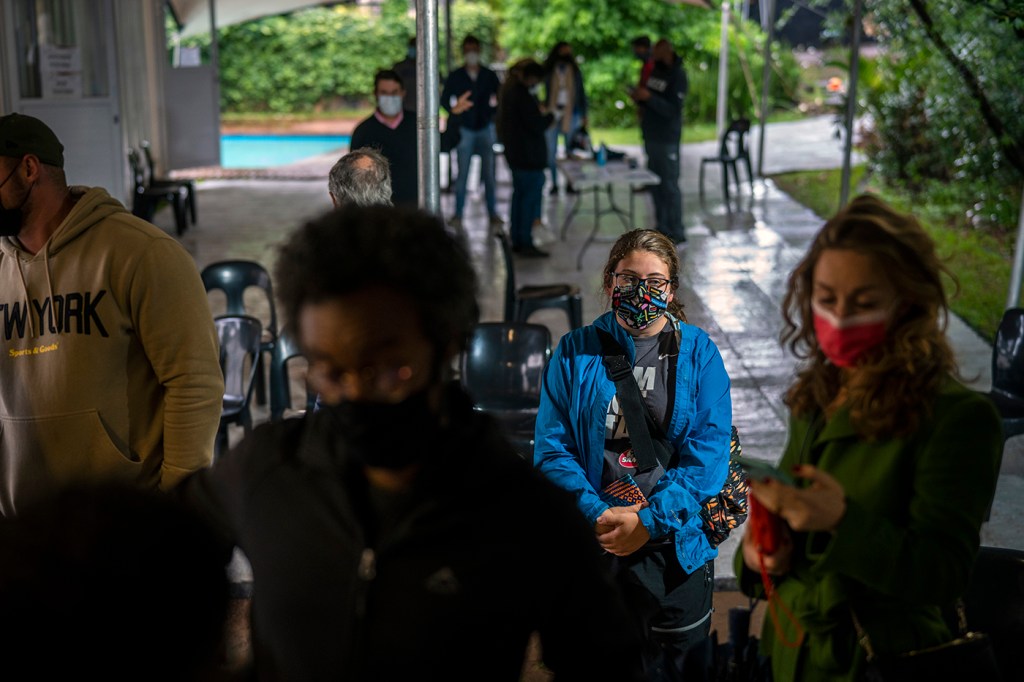Omicron variant questions mount–answers are on the way

A new curveball has been thrown into the battle against the COVID-19 pandemic: the variant named “omicron.”
On Friday, the World Health Organization labeled the new variant of SARS-CoV-2, the coronavirus that causes COVID-19, a “variant of concern.” And, with several more mutations than previous variants, omicron has sparked renewed worries about the future of the pandemic.
Those concerns arose because when scientists sequenced the genome of the omicron variant, they found that some of the mutations might be associated with increased transmissibility, while others might help the virus evade the immune response from vaccinations or previous infections. The emergence and detection of the variant in Southern Africa also coincides with a surge in cases in that region. That’s why the WHO immediately warned the world about this variant.
But there is still a lot of confusion around whether or not omicron will actually spread more easily and dodge immune protections more readily than other strains of the virus.

Alessandro Vespignani, Sternberg Family Distinguished University Professor of physics, computer science, and health sciences, and director of the Network Science Institute at Northeastern. Photo by Matthew Modoono/Northeastern University
“There is a lot of uncertainty,” says Alessandro Vespignani, Sternberg Family distinguished university professor of physics, computer science, and health sciences at Northeastern. But clarity is coming, he says, urging patience.
At this point in the pandemic, scientists know what they need to know and are watching the spread closely to determine that information, says Vespignani, who leads a team of infectious disease modelers that has been developing a set of predictive models to project the future of the COVID-19 pandemic since early 2020. “Our fight in the next few weeks will change depending on the information and the science that we will accumulate,” he says.
There are three main characteristics that researchers are watching for in omicron: Transmissibility, severity, and what is called “immune escape,” its ability to dodge immunity—whether from vaccination or prior infection. If the variant has an increase in any of those areas from previous strains, it could spell trouble for the world.
The good news, says Vespignani, is that we have a good sense of when we will have answers to each of those questions.
In a week to 10 days from now, scientists will have laboratory data about how well antibodies from vaccines and previous infections (by earlier strains) work to neutralize the omicron variant. That research won’t be in human bodies, but will lay important groundwork for the next phases.
In about two to three weeks, Vespignani expects that there will be enough data from cases in Southern Africa and the other parts of the world where omicron has been detected to give a better picture of transmissibility and immune escape in the real world.
In about a month or so, those larger numbers of confirmed cases of the omicron variant will likely show scientists how severe the symptoms are, and what hospitalization and death rates may be, compared to previous strains.
“We hope that those numbers will not materialize,” Vespignani says. But if they do, researchers will be able to piece together a more accurate picture of the influence omicron will have on the pandemic going forward.
In the meantime, many countries have instituted travel restrictions to stem the spread of the new variant.
Those restrictions, Vespignani says, are not going to keep the variant out of the U.S., for example. “But it is delaying the importation and introductions of more cases so that we can slow down the rise of this variant,” he says. And that could buy crucial time for researchers to learn more about this variant, how to fight it, and how to treat patients who contract it.
For concerned citizens, Vespignani says, this is a moment to reinforce the safe behaviors that we have all learned over the past 20 months, and to not delay in getting a vaccine or a booster shot, because every bit of immune protection could help.
Public health experts recommend that people wear masks in crowded places or traveling, avoid crowds when possible, and make use of both PCR and rapid antigen tests to minimize the risk of spreading the disease.
“This is still COVID, so we know what prevents spread, and what to do to protect ourselves, to a certain extent,” Vespignani says. “This is a moment for rational thinking rather than generalized panic.”
For media inquiries, please contact Shannon Nargi at s.nargi@northeastern.edu or 617-373-5718.





